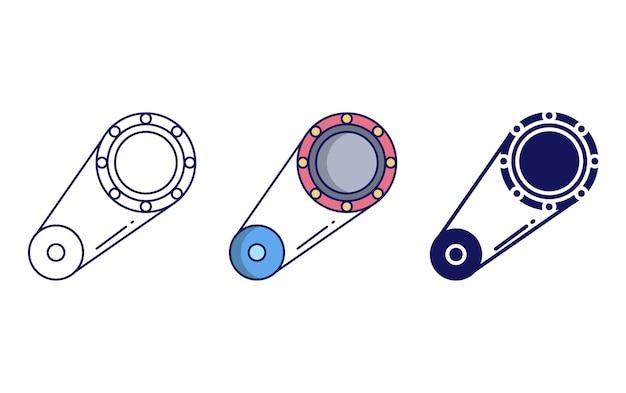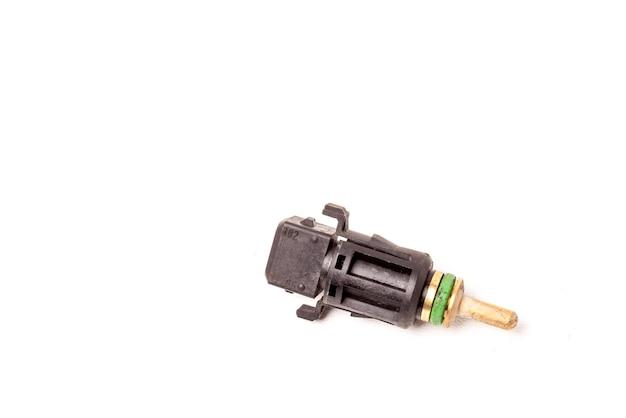In the ever-evolving world of technology, computers play a crucial role in our everyday lives. But have you ever wondered how these complex machines actually work? Behind the scenes, the functioning of a computer is governed by a range of intricate components, each with its own distinct role and purpose. One such component is the Timing and Control Unit, which serves as the brain of the computer, coordinating and regulating its various operations.
In this blog post, we will delve into the world of computer architecture and explore the vital function of the Timing and Control Unit. We will answer questions like whether the control unit is a hardware or software, what RegWrite means, who controls memory, and the two basic functions of the control unit. We will also discuss control signals, control memory, and the different types of control organization in computer architecture. So, join us as we demystify the inner workings of computers and gain a deeper understanding of this crucial component. Let’s dive in!

What is the Function of the Timing and Control Unit
In the world of computers and technology, timing is everything. And just like a symphony conductor, the timing and control unit plays a crucial role in ensuring all the components of a computer system work together harmoniously. So, what exactly does this marvelous little unit do? Let’s dive in and find out!
Timing is Key
At its core, the timing and control unit, also known as the TCU, is responsible for keeping everything in sync within a computer’s central processing unit (CPU). It acts like a maestro, coordinating the timing of various operations, from fetching instructions to executing them and delivering the results.
Calling the Shots
One of the TCU’s primary functions is to dictate the order in which instructions are executed. It breaks down complex instructions into simpler micro-operations and then orchestrates the CPU’s resources to execute them efficiently. Think of it as a traffic controller, ensuring that every task gets its turn on the green light while avoiding any collisions or bottlenecks.
Keeping it All Together
In addition to managing instruction execution, the TCU oversees the flow of data between different components of the CPU. It controls the movement of data between the CPU’s registers, the arithmetic and logic unit (ALU), and the system’s memory. It’s like the air traffic controller of the CPU, making sure that data lands where it needs to be, and ensuring smooth communication between all the parts.
Time is of the Essence
Timing is crucial when it comes to executing instructions. The TCU generates and distributes clock signals that synchronize the entire CPU’s activities. Every operation within the CPU is driven by these clock signals, like a metronome keeping everyone in rhythm. Without precise timing, chaos would ensue, and your computer would likely freeze or crash more often than a clumsy ice skater.
A Sense of Control
Beyond orchestrating timing and data flow, the TCU also plays a vital role in managing the CPU’s control signals. These signals determine when operations begin, end, or change their state. It’s like an invisible hand, guiding the CPU’s behavior and ensuring that each instruction is carried out correctly.
The timing and control unit is the unsung hero of the CPU, tirelessly overseeing timing, data flow, and control signals. Without it, your computer would resemble a chaotic orchestra without a conductor—a cacophony of confusion. So, the next time you marvel at your computer’s seamless performance, remember to give a little nod of appreciation to the timing and control unit, the maestro behind the scenes.

FAQ: What is the Function of the Timing and Control Unit
Is the Control Unit a Hardware or Software
The control unit is a hardware component of the Central Processing Unit (CPU). It functions as the brain of the computer, coordinating and directing the activities of other hardware components.
What is RegWrite
RegWrite is a control signal used by the timing and control unit to determine whether the value in a register should be written or not. It plays a crucial role in managing the flow of data within the CPU.
What is the Function of the Timing and Control Unit
The timing and control unit’s main function is to ensure that all the components of the CPU work together harmoniously, following a synchronized and organized sequence of actions. It controls the timing and coordination of various operations, such as fetching, decoding, executing, and storing instructions and data.
Who Controls Memory
The control unit is responsible for controlling memory. It regulates the transfer of data between the CPU and memory, ensuring the correct execution of instructions and the efficient retrieval or storing of data.
What are Two Basic Functions of the Control Unit
The control unit has two primary functions:
-
Instruction Interpretation: It decodes the instructions fetched from memory, determining the action to be performed by the CPU based on the instruction’s opcode.
-
Control Signal Generation: It generates control signals that activate specific components or pathways within the CPU, facilitating the execution of instructions and the flow of data.
When the Signal Can Be Read and Written, What Is It Called
When a signal can be both read from and written to, it is known as a bidirectional signal. These signals are crucial for data transfer between the CPU and memory, allowing the exchange of information in both directions.
What are Control Signals
Control signals are electrical signals generated by the timing and control unit to manage and coordinate the operation of different CPU components. They control actions such as reading data from memory, writing data to registers, performing arithmetic operations, and branching to different instructions.
What are the Two Types of Control Organization in Computer Architecture
The two types of control organization in computer architecture are:
-
Hardwired Control: This type of control organization uses physical circuits to implement the control logic. It is typically fast but less flexible and harder to modify or update.
-
Microprogrammed Control: This type of control organization relies on a microprogram, a sequence of microinstructions stored in a control memory. It offers greater flexibility and ease of modification at the expense of slightly slower execution.
Can Control Memory Be Used
Control memory, also known as a control store, is a type of memory used in microprogrammed control units. It holds microinstructions that control the operation of the CPU. However, directly accessing or modifying the control memory by programs or users is not possible.
How Do You Control Memory
Memory control is achieved by using control signals from the timing and control unit. These signals coordinate the reading and writing of data to and from memory, ensuring proper data flow and synchronization with other CPU components.
How Does the Control Unit Work
The control unit acts as the supervisor of the CPU, overseeing the execution of instructions and coordinating the flow of data. It receives instructions, decodes them, generates control signals, and directs the execution of specific operations within the CPU components. Through its meticulous control, the CPU operates cohesively, executing instructions accurately and efficiently.
What is the Necessity of Grouping Signals
Grouping signals allows for efficient management and control within the CPU. By organizing related signals together, the timing and control unit can simultaneously activate or deactivate multiple signals, facilitating the proper coordination and execution of complex operations. This grouping simplifies control logic and ensures smooth communication between different CPU components.
What are the Three Components of the CPU
The CPU consists of three main components:
-
Control Unit: The control unit manages and directs the operations of other CPU components, ensuring the execution of instructions and the flow of data.
-
Arithmetic Logic Unit (ALU): The ALU performs arithmetic calculations (addition, subtraction, multiplication, division) and logical operations (AND, OR, NOT) as specified by the instructions.
-
Registers: Registers are small, high-speed storage units that hold data and instructions that the CPU needs to access quickly. They play a vital role in temporary data storage and manipulation.
What is Timing in the CPU
Timing refers to the synchronization and coordination of activities within the CPU. The timing and control unit ensures that each operation occurs at the precise moment required for the CPU to function efficiently. It guarantees that the execution of instructions, data transfer, and other operations occur in the correct sequence and at the proper timing intervals.
Which Type of Control Unit is Used in Present-Day Computers
Present-day computers predominantly use hardwired control units. The advancement in hardware technology and increased processing speeds have made hardwired control units more feasible and practical, offering higher performance and efficiency for most computing needs.
Now that you’ve gained a clearer understanding of the timing and control unit, you can appreciate its significance in the smooth operation of your computer’s CPU. It’s a remarkable feat of engineering that combines hardware components and meticulous coordination to ensure the efficient execution of instructions and data manipulation.
